Nest thermostat is a connected thermostat that is linked with the Android app and lets you adjust the temperature when you are at home or away from home. The two most popular models are Nest and Nest E. The Nest E thermostat has all the features the Nest Gen 3 thermostat but is known to be a little bit less expensive than Gen 3. In this post, we would tell you which one is better between Nest and Nest E and why in detail.
Our Verdict
Quick Navigation
Both the products almost have the same features and qualities. But the Nest Gen 3 is much preferred than the alternative Nest E. Nest Gen 3, although being slightly more expensive than Nest E, the features included in it are worth the money. Whereas in Nest E, even though it is cheaper, you will be trading off features for the money. We will compare both of them and find out which one works best for you.
Nest Vs Nest E: Comparison Chart
| Specifications | Nest | Nest E |
|---|---|---|
| Colors | Multiple colors | One color |
| Material | Glass & metal | Plastic |
| Resolution | 480*480 | 320*320 |
| Cost | expensive | Less expensive |
| Motion sensor | Yes | No |
| Voice commands | Yes | Yes |
| Wireless | Yes | No |
| Farsight | Yes | No |
| Price | Check Price | Check Price |
Differences
1. Price
If money is a huge factor for you, then Nest E is the one for you. The Nest E offers almost all the features The Nest Gen 3 has to offer except for few. But if you are looking for a thermostat with no special features, then Nest Gen is suitable for you.
Talking about the cost, Nest E is a cheaper and affordable alternative for Nest Gen 3 thermostat.
2. Display
The Nest 3 is made of higher-end materials like stainless steel and glass, uses crystal clear LCD, and are available in different colours. The Nest E is made of frosted glass, available in one colour and has less resolution of 320×320. Whereas Gen 3 has a high-quality resolution of 480×480. The Nest Gen 3 has an additional feature called Farsight that displays the temperature outside, and across the room when you pass by, Nest E lacks this feature and displays only the indoor temperature.
The Nest Gen 3 is a win here.
3. HVAC support
The Nest Gen 3 is compatible with 95% of households, whereas The Nest is compatible with 85% of the HVAC unit. The reason for this may be due to the reduced number of terminals in the Nest E and does not support two-stage heating and cooling systems. On the other hand, Gen 3 is more compatible with the heating and cooling appliances and can accommodate two accessories at once.
If you are looking for compatibility in your thermostat, The Nest Gen 3 might be the one for you.
4. Motion Sensor
The most crucial feature we would want in a thermostat is to save energy and not to waste it unwantedly. The Nest Gen 3 does this by sensing your presence and auto-adjusting the temperature when you are around. The sensor works through your phone’s GPS and your Nest App. Even though you don’t allow your GPS, the sensor located inside the thermostat will detect your presence and make auto adjustments. Nest Gen 3 is most preferred when it comes to saving energy.
Similarities
1. Nest Leaf
This initiative helps consumers to save energy. Nest offers a leaf in the thermostat every time you choose energy-saving temperatures and guide you to make energy-saving decisions.
2. Installation
Easy installation and fixing are something we look for in most of the home devices. Luckily In both the versions of the invention, the installation is easy and pretty quick so that we don’t waste hours fixing it. If you do get stuck, the user manual has your back.
3. Voice Commands
Both the devices can connect to third-party-integrations. Nest allows you to give voice commands to home devices, mainly Google Home and Amazon Alexa. It makes things even simpler for us. Not only that, but they can also connect to other devices through IFFT.
4. Nest Airwave
This feature is available on both devices. It allows the thermostat to detect the humidity, and if it falls below a certain level, the Airwave gets turned on. The humidity level is different for each house and calculates it based on the temperatures in your home.
Specifications Of Nest Gen 3
- Resolution of 480×480 with 24-bit LCD
- Compatible with 95% of HVAC units
- Comes in 4different colours
- Motion Sensor
- 512MB memory
- Built-in rechargeable battery
- 2-year Warranty
Specifications Of Nest E
- Resolution of 320×320 with 24-bit LCD
- Compatible with 85% of HVAC units
- 256MB memory
- Built-in rechargeable battery
- 1-year Warranty
What You Get In The Box
The Nest box contains
- Nest Thermostat display and base
- Trim and steel plate
- Nest screwdriver
- Mounting screws and wire labels
- Installation and welcome guide
The Nest E box contains
- Nest thermostat display and base
- Trim plate
- Mounting screws and wire labels
- Installation guide
Overview Of The Nest
If you want an automated thermostat, then The Nest is the one for you. The high quality 480×480 display made of stainless steel and glass will add a more aesthetic vibe to your house. It is available in seven different colours. The cost might be a bit higher, but it doesn’t let you down with the additional features it adds. It supports about 95% of HVAC units and is suitable for most households. With the easy installation, it is user friendly, and users won’t be facing any difficulties. The critical feature in the 3rd generation thermostat is the addition of Motion sensors and farsight features. This sensor detects the presence of members inside the house and adjusts the temperature accordingly. If no one is in the house, it turns the appliances off. This feature helps us take one step ahead in saving energy and resources. Another energy-saving feature is the Nest Leaf and Airwave. You can also control the device using Amazon Alexa, Google Home, or any home devices. The device consists of a rechargeable lithium-ion battery and with 512MB memory.
- Farsight feature
- Seven different colours
- Works with 95 HVAC systems
- Motion Sensor
- Works with Google Home or Amazon Alexa
- Expensive
Overview Of The Nest E
If you are looking for a cheaper alternative for Nest gen three, then the Nest E offers you most of the features at an affordable cost. The device is made of the frosted display and only shows indoor temperatures. The display resolution 320×320 with 24-bit LCD, hence it might appear a bit blurry. The device is available only in one colour, which is white. So you do not have a lot of options to select. The system is compatible with 85% HVAC units, and the reason may be the presence of fewer wires. The installation is secure and can finish in no time.
The device also consists of features like The Nest Leaf and the Airwave and works with any voice command integration systems. The device includes a rechargeable lithium-ion battery and has 256MB of memory.
- Costs Less
- Supports 85% of HVAC system
- Works with Google Home or Amazon Alexa
- Motion Sensor
- No farsight feature or motion sensor
- Less attractive display
FAQs
1. Does Nest work with Alexa?
Yes, Nest works with Alexa as well as Google Home.
2. Can I control the heating and cooling of my nest thermostat outside my home?
Yes, as long as your Nest thermostat is connected to your home Wi-Fi network, you will be able to control the temperatures outside the home
3. Does Nest E require a standard wire?
In most of the cases, it does not require a standard wire, but it is recommended.
4. Does the Nest still work if my Internet goes off?
Yes, it will work like a regular thermostat and will store the previous temperatures it was set to or go into energy-saving mode.
Final Thoughts
By the end of this, Nest 3rd Gen looks a more on the winning side for us. Considering the designs, the build, and the additional features, the amount we will be paying for the device is worth it. However, if you are looking for a standard home thermostat at a reduced cost, the Nest E is not so bad at all.
Google Nest Learning Thermostat - Editor's Choice
Summary
If you want an automated thermostat, then The Nest is the one for you. The high quality 480×480 display made of stainless steel and glass will add a more aesthetic vibe to your house. It supports about 95% of HVAC units and is suitable for most households. You can also control the device using Amazon Alexa, Google Home, or any home devices. The device consists of a rechargeable lithium-ion battery and with 512MB memory.



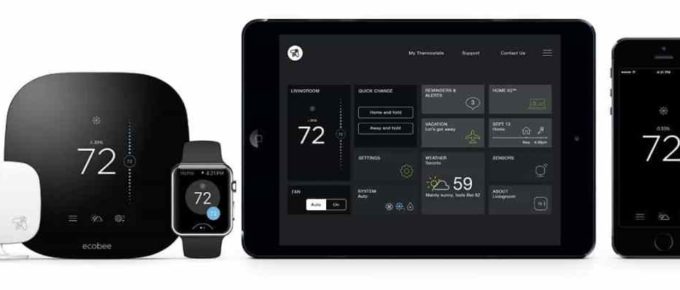
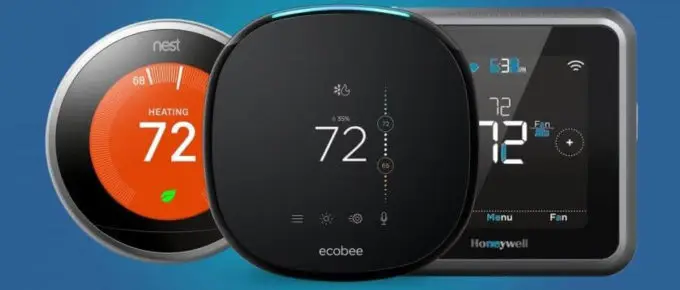
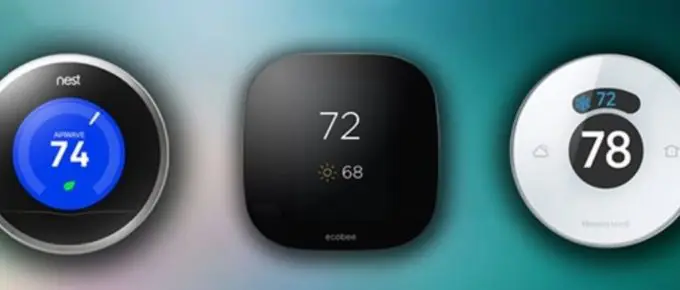
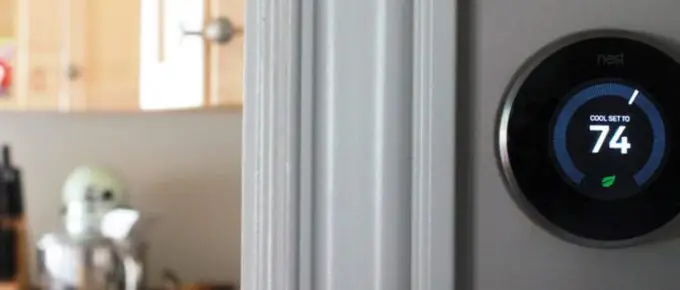
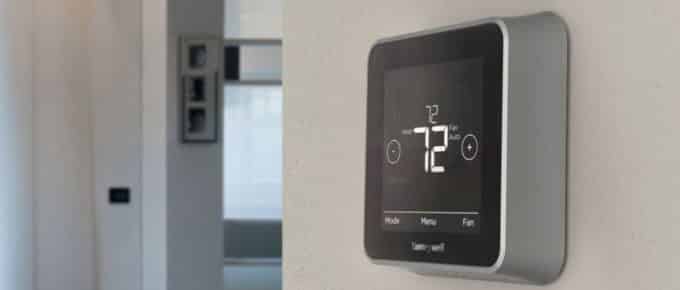
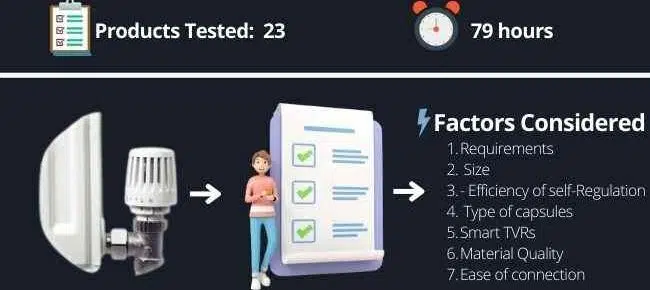
Leave a Reply